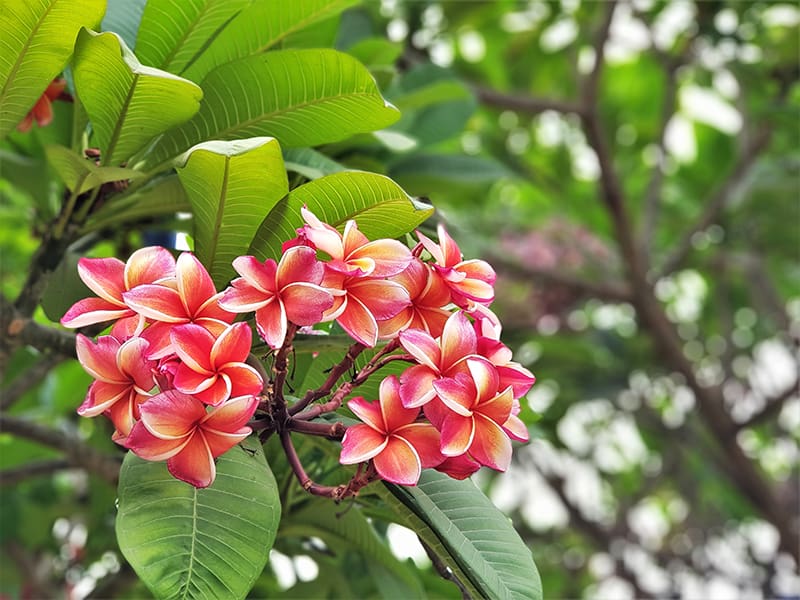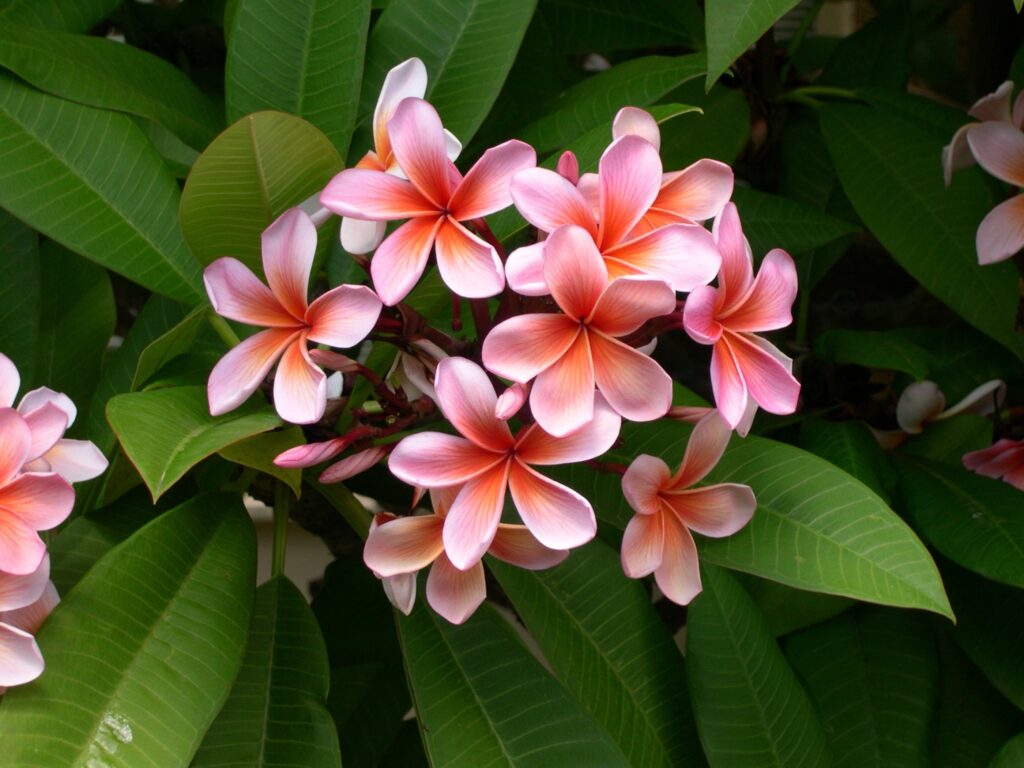Tropical flowers are praised for their vibrant hues, extraordinary shapes, and abundant foliage, making them a stunning addition to both outdoor and indoor settings alike. These tropical and subtropical flowers bring a sense of paradise to any setting. This article provides an overview of well-known tropical flowers, their novel characteristics, and strategies for cultivating and really concentrating on them.
1. The Attractiveness of Tropical flowers:
Tropical blossoms are renowned for their striking beauty and distinctive transformations that set them apart from other flowers. They thrive in warm, soggy conditions and regularly feature sending out vibes and bizarre shapes.
a. Vibrant Colors of tropical flowers:
Tropical blooms much of the time include outrageous, sending out vibes like stunning reds, oranges, yellows, and pinks. This powerful feature attracts pollinators and adds an energetic touch to any setting.
- Amazing Shapes: From the multifaceted examples of orchids to the emotional petals of bird-of-heaven blossoms, numerous tropical blossoms have particular shapes. These original designs make them eye-getting and fundamental.
- “Delightful Foliage“: In addition to their flowers, tropical plants’ broad, glossy leaves add to their tropical appeal and provide a lush background.
b. Notable Purposes of tropical flowers
- Gardens: Adding variety and surface to outdoor areas, tropical blossoms can transform a nursery into a tropical paradise.
- Indoor Decoration: You can grow a lot of tropical flowers inside, adding a touch of the jungle and lighting up your living room.
- Arranged activities: Because of their emotional and eye-catching appearance, they are popular in decorative layouts for unique events like weddings and gatherings.
2. Renowned Tropical flowers
There is a wide variety of tropical blooms, each with its own striking allure. Some of the most popular are:
a. Orchids
Orchids are among the most various and superb tropical blooms, with incredible numerous species and crossbreeds.
- Phalaenopsis Orchids: Phalaenopsis orchids are a famous indoor plant in view of their exquisite, butterfly-like sprouts in various varieties.
- Cattleya Orchids: These orchids are frequently used in corsages and brightening game plans because of their large, ostentatious blossoms with unsettled petals.

b. The Bird of Heaven:
The Strelitzia reginae (Bird of Heaven) is notable for its striking, bird-like blossom shape and energetic tones.
- Orange Bird of Paradise: This collection has bright orange and blue blossoms that look like the feathers of a tropical bird, making it a touching and wonderful choice for gardens.
- The “White Bird of Paradise” This collection adds a dash of elegance and taste with its large, white blossoms and lush foliage.
c. Hibiscus:
Hibiscus blossoms are commonly used in tropical-themed stylistic layouts due to their enormous, vivid sprouts.
- The “Red Hibiscus” The stunning red hibiscus is a commendable tropical bloom, addressing radiance and excitement.
- Yellow Hibiscus: This assortment of hibiscus plants brightens up nurseries and game plans with its brilliant yellow petals.
d. Plumeria
Plumeria, or frangipani, is well known for its fragrant, pinwheel-shaped blooms that come in various assortments.
- White Plumeria: The white variety is as often as possible associated with temperance and is consistently used in leis and tropical plans.
- Pink Plumeria: Pink plumeria adds a lively and sweet scent that works well in both outdoor and indoor settings.
e. Anthuriums:
Anthuriums, also known as flamingo blossoms, are characterized by their exquisite tones and polished, heart-shaped blossoms.
- Red Anthurium: Due to its vibrant red flowers, this variety is popular for indoor plant displays and floral arrangements.
- The “Pink Anthurium” With its fragile pink blooms, this combination adds a delicate and rich touch to any setting.
3. Creating Tropical flowers
Tropical blooms require express conditions to prosper, reflecting their standard living spaces. Here is a guide to helping them grow and care for themselves:
a. Light Necessities
- Splendid, Indirect Light: Most tropical blooms favor awesome, deviant light. In too much direct sunlight, flowers may wilt or fade.
- Capacity to bear Shades: A couple of tropical blooms, like orchids, can persevere through lower light conditions, yet they overall prosper with above and beyond light.
b. “Warm Temperatures”:
Tropical flowers thrive at temperatures between 65°F and 85°F (18°C and 29°C). Keep them out of cool drafts and unexpected changes in temperature.
- High Humidity: Tropical plants thrive in high tenacity. Keeping up with the necessary dampness levels can be made simpler by routinely moistening the plants, utilizing a humidifier, or setting the plants in a water-filled stone plate.
c. “Well-Draining Soil”:
Utilize a well-draining potting mix, such as a blend of peat moss, perlite, and bark, to ensure proper root aeration and avoid waterlogging.
- Consistent Moisture: The soil should always remain moist but not completely wet. License the top inch of soil to dry out among waterings, and change considering the plant’s specific necessities.

d. Treatment tropical flowers
- Changed Fertilizer: Use a sensible, water-dissolvable fertilizer to deal with tropical blooms every 4 to about a month and a half during the creating season (spring and summer). For application rates, adhere to the producer’s guidelines.
- Restricted Feeding: During the lazy period (fall and winter), decrease the repeat of treatment to hinder over-burdening.
e. Support and pruning:
To maintain a slick appearance and support new growth, remove spent blossoms and dead foliage.
- Bother Control: Regularly explore tropical blooms for bugs like aphids, bug vermin, and mealybugs. Treat attacks promptly with fitting methodologies, for instance, insecticidal chemical or neem oil.
4. Adding Tropical Flowers to Your Space:
Tropical flowers can enhance both indoor and outdoor settings thanks to their exotic appeal and vibrant colors.
a. Tropical Nursery Design for Outside Nurseries:
By combining a variety of tropical blossoms with lush foliage and intricate grasses, you can create a tropical nursery. Garden beds, boundaries, and holders can profit from their energy and surface.
- Compartment Gardening: Tropical blossoms can be grown in compartments allowing you to create convenient presentations that can be moved as needed.
b. Indoor Elaborate subject
- Houseplants: Foster tropical blooms inside to bring a smidgen of the wildernesses into your home. For instance, orchids and anthuriums are excellent indoor-friendly varieties.
- Herbal Arrangements: Plan to use tropical flowers to illuminate living areas, dining areas, or extraordinary events. They look perfect in flower bundles, highlights, and other pretty shows.
Conclusion:
Tropical blooms offer a vivacious and fascinating touch to any environment, from rich nurseries to forward-thinking indoor spaces. Because of their unique beauty, variety, and striking colors, they are a popular choice for adding a splash of tropical paradise to your life. You can partake in the dazzling appeal of tropical blossoms consistently assuming that you understand their specific necessities and mindfully integrate them into your style.







